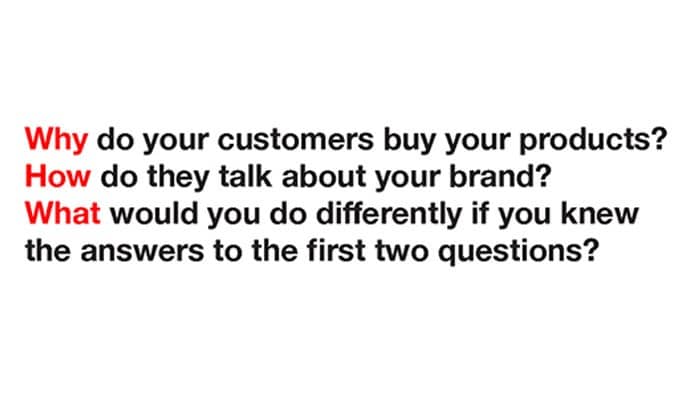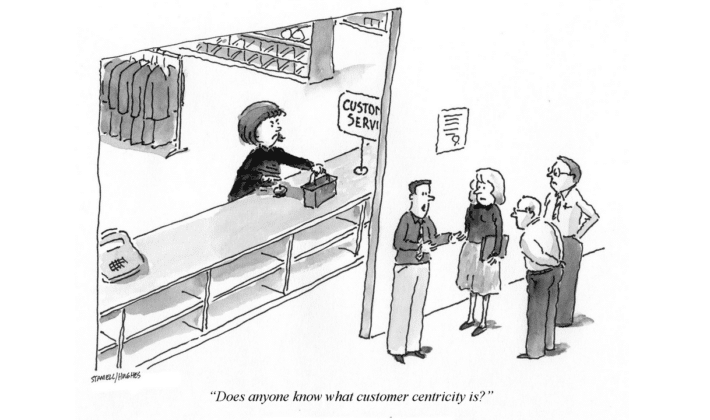If market research is giving you customer insights, where are your customers?

Market research has a problem. It can’t, by itself, acquire, engage or retain a customer. That sounds obvious but it’s a real problem because without the ability to build business, research loses influence and utility within a company’s structure. In fact, it’s often one of the first cuts that is made to marcom budgets. The real loser, however, is not research, it’s marketing and sales.
The reasoning for cutting market research is often that the research budget can be put into hiring another salesperson with the idea that more people knocking on more doors will acquire and retain more customers. With the adoption of CRM systems, transaction history has supplanted softer research findings as the means to project customer behavior.
That gives rise to two problems
First, without deep customer knowledge, how can you engage and retain your best customers? The old adage that 80% of your sales comes from 20% of your customers means that those customers provide stability and lifetime value. As long-term customers grow and their lives change, they will recommend your brand to others if you have provided them with a quality product or service, resulting in significant compounded lifetime value.
Nearly 20 years ago, Bain & Company along with Harvard Business School established the bottom line in long-term customer value: increasing customer retention rates by 5% increases profits by 25% to 95%. Yet, companies continue to spend more on finding new customers than they do in understanding their existing ones.
The insights of long-term customers can tell you why they make the decisions they do to choose your brand over your competitors. Without market research, it’s difficult to understand their emotions, insights, and motivations. That will get agreement from the sales department but they want more, which is a direct connection to each and every one of those best customers.
Problem No. 2:
Hence, the growth of CRM, which has used every customer transaction and touch point to form algorithms that project future customer behavior. Let’s acknowledge that algorithms are simply mathematically based guesses. They can and do work if your customer database is large enough. Say, for example, that you have a database of 300 million customers. You may ask who could possibly have a database that large? If you haven’t guessed already, ’ll give you a hint: their name begins with an “A”.
Suppose, 50 million of those customers bought socks in the past six months and we know that another set of 50 million people who bought socks in the prior six months also bought T-shirts. A simple algorithm would suggest that we send the more recent group of 50 million a promotion for T-shirts or at least make sure that T-shirts show up at the top of their page when they come to the website. We’re making all these projections based on what we’ve seen in the past, through a rear-view mirror, so to speak.
Now, suppose that only ¼ of 1% of the group you’re targeting decides to buy T-Shirts at an average price of $20 per unit. That’s 125,000 T-Shirts and sales of $2.5 million on just one item at one point in time. In this example, the algorithm proved itself and it’s not too difficult to see how Amazon could get themselves up to $233 billion in sales by repeating this exercise millions of times and continually refining the algorithm. But take the same scenario with a company that only has 30,000 customers and it adds up to a paltry 75 T-Shirts and $1,500 in sales. It’s not too difficult to see why so many SME’s are disappointed with the sales contribution of their CRM systems. CRM aggregates transactional data but does nothing to build customer relationships.
Connect customer research to customers
So how does this all apply to market research? Well, if you could connect your research findings to each and every customer, their value would skyrocket. If you could segment your best customers by their values and observations and provide content specific to those factors, you’d be making a direct connection between market research and sales. There would be no need to rely on a rear-view mirror to direct your sales efforts.

You can make those connections and we do. The basis of the Oomiji platform is to directly connect customer information to customers, regardless if it’s demo- or psychographic or a response to an open-ended question that begins with “What if…?”. You can segment by any criteria meaning that you can direct content to individuals based on what they’re looking for. You can also read every text response to your questions and segment by their conversations.
Let’s also broaden our idea of what market research is. We tend to think of it as a long form survey with many questions. But the way Oomiji works is that research information comes in from surveys (long or short), one or two questions in an email, or a signup form. Oomiji enables you to ask your customer questions with any frequency or number so you could actually ask one question a week if you wanted. Every response is appended to each individual’s database file so, over time, you’re building out each customer’s persona. You can create a segment of thousands who share like needs and interests or a segment of one that merits a personalized approach. It’s about as close as you can get to 1:1 marketing without meeting the customer personally.
To the question, If market research is giving you insights, where are your customers?,we know where they are, what they want and why, and so should you.
If you’d like to see how Oomiji works, let me know or contact us at info@oomiji.com and we’ll set up an online demo showing a case history.



